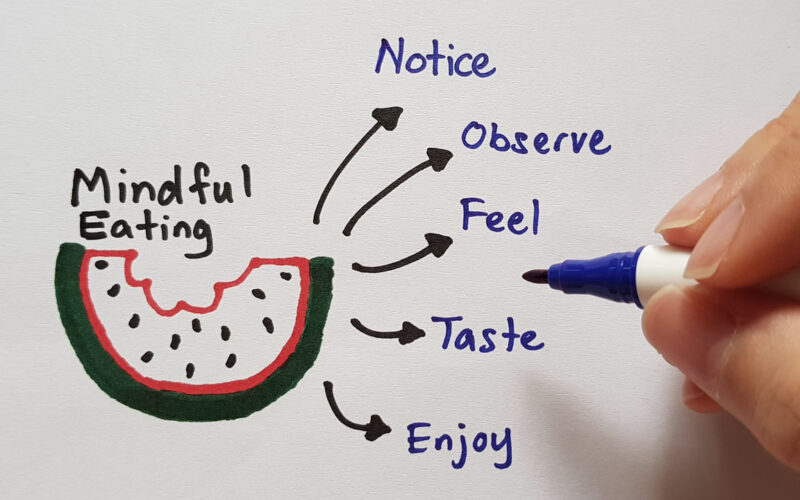Many people frequently place great importance, emphasis, and stress on their diet. And while doing so, they try to eat correctly, which often entails eliminating particular items that they view as unhealthy.
It is understandable if you choose to do this. It makes perfect sense for you to concentrate your attention since the nutrition industry emphasizes what to consume.
What do you need to eat well?
Even though it is crucial to know how to properly nourish yourself and receive the nutrition your body needs to feel and operate at its best, doing so on your own won’t help you develop a healthy eating routine that you can keep up for the rest of your life.
If it did, nobody would ever experience difficulty trying to eat healthily every day! Assume that everyone would always consumes the recommended amount of food. We all, however, have firsthand knowledge that this is not the case.
Even when you know what to eat to fuel your body, maintaining it might not be easy because so many other things influence your eating habits. Focusing on eating flawlessly too much can keep you in a cycle of starting and stopping.
In this cycle, you can eat healthily for a while. But, still, you eventually go “off-track” whenever something affects your ability to make healthy food decisions, such as going out to eat, being overly stressed or bored, being “tempted” by a delicious treat a friend brought to school, not having sufficient time to prepare a meal after work, etc.
You can probably recall one or two situations that hindered you from maintaining your good eating routines. Because of this, it’s crucial to pay equal attention to your eating habits.
Learning to negotiate all the other elements that affect your food choices is the primary goal of the “how” you’re eating a portion of the equation. And we accomplish this by eating mindfully.
One of the best practices for figuring out what fits you and forming good eating habits is to take your time and be more careful of what you’re eating and how your body feels prior to and after eating.
The best aspect is that you can savor any food without getting carried away or devouring it by practicing balance with this exercise.
Be more conscious of what you eat
Here are some pointers to assist you in starting with a mindful eating practice that will enable you to strike this purposeful balance with your eating patterns and allow you to eat well every day.
Check-in with yourself before and after you eat.
Stop and assess your feelings both before and after meals. Find out whether you’re relaxed, stressed, emotional, hungry, or full. You can also find out why you’re eating by doing this. We should ideally only eat when we are hungry, but this is only sometimes the case.
You can gradually develop self-awareness and a deeper understanding of your connection with food by regularly practicing this self-check-in. Then, being aware of your eating patterns and food might become a habit.
Take away every distraction while eating.
Distractions during meals have the power to ruin attentive eating swiftly. For example, consider all the interruptions you often have while eating, such as using your phone, watching TV, or even working during your lunch break.
Take things off the table so you can concentrate solely on eating. As a result, you’ll be far more likely to pay attention to and appreciate your hunger, satiety, flavor, and whole eating experience.
Dine at the table when you can.
While so many of us can become comfortable eating at our workstations or on the couch, eating at the table is an excellent exercise. Train your brain to recognize when to slow down and eat by simply setting aside space at your table or counter, wherever you eat, just for eating.
Make your eating experience the best.
You should always try to make your eating experience the best. Consider how you may make it as enjoyable as possible, whether preparing a meal rich in nutrients or eating a sweet treat, which is especially effective if you’ve already tried to restrict your diet. Give yourself the freedom to appreciate them instead, but be extremely deliberate about how you do so.
For instance, you might make it a habit to indulge in a few cookies every evening following a healthy meal. Yet, after a while, you might discover that you are only eating those cookies out of habit and no longer because you are enjoying them. So, you can change your routine and have them every once in a while mindfully with utmost satisfaction.
Feed your body right
Eating various foods to satisfy your appetite and nurture your body is another mindful eating technique; eating a balanced meal will help you achieve this.
A balanced meal must include proteins, non-starchy carbs, starch, healthy fats, and a flavor component. In preparing a balanced meal, you should also switch up the colors and textures of each element. Having a range of vitamins and minerals is made possible by doing this.
Next, ensure you’re experiencing your food with all your senses. We should experience our food’s flavors, textures, appearance, and aromas, as these elements all add to the whole dining experience. We are mindful and in the present when we thoroughly enjoy our food with all our senses.
Conclusion
Now that you know why it’s not necessary to eat ideally or to avoid specific foods, you should follow the above five recommendations to help you practice balance while eating.

